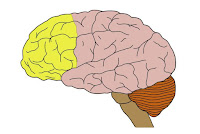However, a social skills program developed to address general social impairments doesn’t adequately address the social skills deficits specific to HFA and Asperger’s.
When selecting social goals for intervention, it’s crucial that parents prioritize and address the skill deficits that are most relevant to their child (e.g., eye contact may be a greater priority than negotiation skills, given its significance in social interaction, such as monitoring other’s reactions to indicate interest or engagement).
In addition, it’s important that all instructional activities have an underlying social purpose. Make clear to your child how and why the goals selected are relevant for him or her.
The five broad skills that are particularly relevant to HFA and Asperger’s are: social problem-solving skills, play and friendship skills, emotion-processing skills, conversational skills, and basic interactional skills.
Specific social skills to teach should include the following:
• Conversation skills need to cover basic elements of how to start, maintain, and end a conversation. The subtler aspects of conversations should be included as well (e.g., asking questions of others, choosing appropriate topics, joining a conversation already underway, making comments, taking turns in conversation, and using nonverbal indicators to express interest).
• It’s crucial to teach basic friendship and relationship skills. The concept of friendship and the important qualities of being a good friend should be discussed, listed, and practiced (e.g., compromising, following group rules, greeting others, responding to greetings, sharing and taking turns, and joining groups).
• It’s also important for parents to teach the nonverbal behaviors that are important to social interaction (e.g., appropriate eye contact, social distance, voice volume, facial expression, etc.).
• Parents should also help their child to understand thoughts and feelings of self and others. You can begin by increasing emotion recognition and vocabulary skills, because most kids on the autism spectrum are not familiar with emotional terms beyond the basics.
• Perspective-taking and empathy training are two other great skills to teach. Here, you want your child to act out situations in which different people think different things or have different underlying motives.
• Social problem-solving should be taught (e.g., what to do when your youngster is teased, feels left out, or is told “no”). The focus here is on the development of practical solutions, coping mechanisms, and self-control for difficult interpersonal situations.
• Make use Social Stories to introduce new social skills. Social Stories are “written illustrations” that present social information. Although they provide some specific guidance about what to do or say in a social situation, they also highlight social cues, the motives or expectations of others, and other information that the child may not have appreciated.
Your youngster should be aware of his or her personal target goal and should be “reinforced” for meeting it throughout the social skills training you implement (e.g., reinforcement charts posted on the wall, goal or point cards, cups in which the goal is affixed and tokens are placed, etc.).
For new or emerging skills, the child can be reinforced the moment the skill is displayed spontaneously.
==> https://www.social-skills-emotion-management.com
==> Parenting System that Significantly Reduces Defiant Behavior in Teens with Aspergers and High-Functioning Autism
==> Launching Adult Children with Asperger's and High-Functioning Autism: Guide for Parents Who Want to Promote Self-Reliance
==> Parenting Children and Teens with High-Functioning Autism: Comprehensive Handbook
==> Unraveling The Mystery Behind Asperger's and High-Functioning Autism: Audio Book
==> Parenting System that Reduces Problematic Behavior in Children with Asperger's and High-Functioning Autism






















